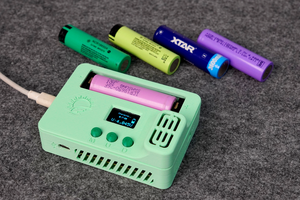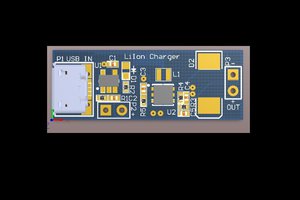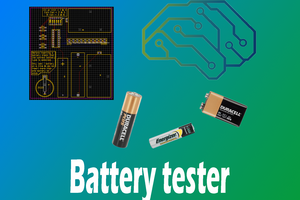Testing battery cells to check if they are still usable can be quite a chore with a multimeter, since it requires 3 hands to do properly. This project provides a solution with battery tester that is cheap and simple, yet effective and easy to use.
Built on a flexible PCB substrate, the the ends of the PCB are the probes, and easily snap on to any cylindrical battery. The brains of the circuit is a cheap Attiny85 chip, and the measurements are displayed on a small 0.96" OLED display. The circuit is controlled with a single button which wakes up the attiny and starts a test. The circuit is heavily based on a design by Andreas Spies, which takes two readings. The first reading is the open circuit voltage, and the second reading is taken with a small load across the battery, connected via a MOSFET.
The circuit is designed to measure and cylindrical battery, including alkaline and lithium in the 0-4.5V range. The cell is connected to the Attiny's ADC via a simple voltage divider.
 Danie Conradie
Danie Conradie




 Open Green Energy
Open Green Energy
 FrazzledBadger
FrazzledBadger
 mosaicmerc
mosaicmerc
 Adam Redfern
Adam Redfern
Excellent idea. I was having issues measuring batteries the other day and thought about making a dedicated battery holder with terminals to easily connect my multimeter. This is so much nicer.